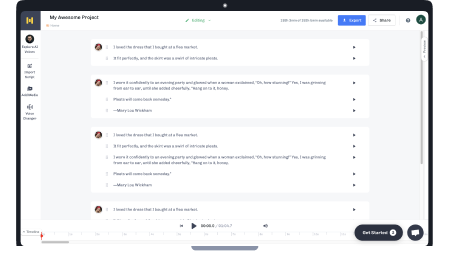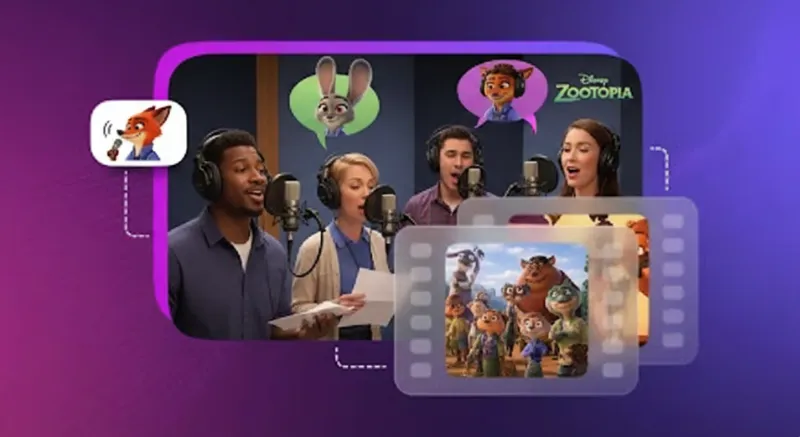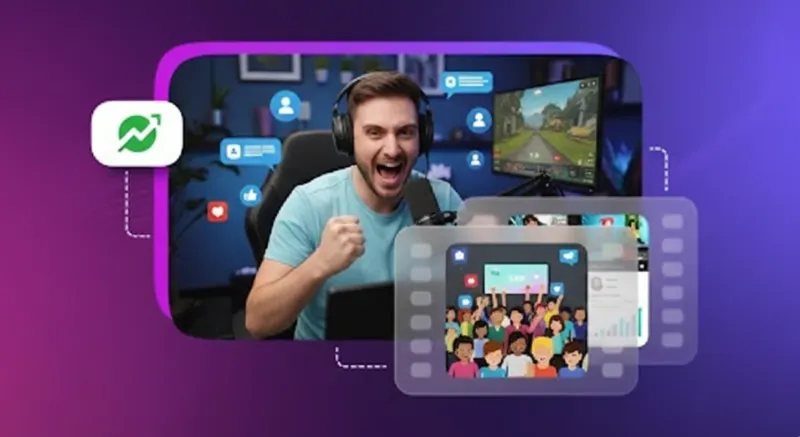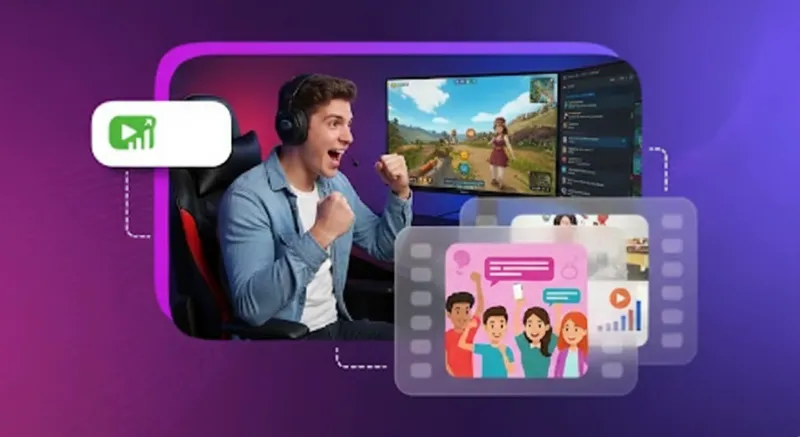Is Dubbing AI Safe & Legal? Examining the Risks and Benefits

AI dubbing is changing how brands and creators connect with global audiences, breaking language barriers quickly and accurately. Netflix used AI dubbing in 2024 to introduce La Palma to new regions, allowing viewers worldwide to experience the gripping Norwegian series in their native languages. This innovation saved time, reduced costs, and delivered a seamless multilingual experience, showcasing the immense potential of AI in content localization.
The demand for AI dubbing is also reflected in industry moves like Disney's 2022 hire of a VP of Localization to focus on machine translation and synthesized voices. As AI tools become integral to content production, they raise critical questions about safety, ethics, and legal compliance. How do we ensure that AI dubbing is secure, respects intellectual property rights, and remains misuse-free?
How Does AI Dubbing Work?
AI dubbing utilizes artificial intelligence and machine learning to automate voice dubbing. Here's how it typically works:
Speech Recognition and Transcription
The first step involves transcribing the original audio into text. AI algorithms are trained to recognize words and the speaker's tone, emotions, and context. It ensures that the subtleties of the original dialogue are preserved.
Translation
The text is then translated into the target language. AI translation models, such as those powered by neural networks, ensure the translation is accurate, culturally relevant, and contextually appropriate.
Voice Synthesis
Once translated, AI generates a voiceover using text-to-speech (TTS) technology. Modern AI dubbing tools replicate the original speaker’s tone, pitch, and style to maintain emotional authenticity.
Lip Synchronization
The final step is syncing the generated voice with the video. Advanced AI systems analyze the speaker’s lip movements in the original footage and adjust the dubbed audio to match seamlessly.
Is AI Dubbing Safe?
The growing popularity of audio dubbing, particularly AI-powered solutions, has sparked discussions about its safety. While the technology offers tremendous benefits, it also raises critical concerns that must be addressed.
Data Privacy
AI dubbing requires large datasets to train models, often including voice recordings. If this data is mishandled, it could lead to privacy violations or unauthorized use of voice samples. For example, if a company uses an actor's voice without consent, it infringes on their rights.
Ethical Concerns
The ability to replicate voices has also led to the rise of deepfakes. AI-generated voices can be used maliciously to impersonate individuals, spread misinformation, or commit fraud. For instance, there have been cases where scammers used AI-generated voices to mimic company executives for committing fraud.
Potential for Misuse
AI dubbing tools can be exploited to create offensive or harmful content, mainly when used without proper oversight. It highlights the importance of robust ethical guidelines and regulations.
Benefits Despite the Risks
Despite these concerns, AI dubbing holds immense promise. The media and entertainment industry can democratize content access by breaking language barriers. It can also be a valuable tool in education, healthcare, and corporate training by enabling personalized and multilingual content delivery.
Dispelling Myths
Several misconceptions surround AI dubbing, often fueled by fear of the unknown. Let’s address some of these myths:
Myth 1: AI dubbing will replace human voice actors.
Reality: AI dubbing complements, rather than replaces, human voice actors. While AI can replicate voices with impressive accuracy, it cannot match the creative expression and emotional depth that human actors bring to their performances.
Myth 2: AI dubbing tools are unsafe by default.
Reality: Safety depends on the tool and its developers. Reputable companies invest heavily in data security, ethical practices, and compliance with legal standards.
Myth 3: AI-generated voices are indistinguishable from human ones.
Reality: Although AI tech is advanced more than traditional dubbing, discerning listeners can often detect subtle differences in intonation and delivery.
Legal and Copyright Considerations
The rise of AI dubbing has introduced new legal challenges, particularly concerning copyright and ownership of AI-generated voices. Some countries have taken the lead in addressing these issues:
The ELVIS Act
In 2024, Tennessee passed the ELVIS Act, marking a significant milestone in voice rights legislation. This act makes it a civil and criminal offense to use someone’s voice without their consent, recognizing that a person’s voice is a valuable personal asset. This legislation reflects growing concerns about voice cloning and sets a precedent for similar laws in other regions.
The EU AI Act
The European Union's AI Act addresses using copyrighted materials, including voice data, in training AI models. The act requires that rights holders explicitly authorize the use of their content, ensuring transparency and accountability. This regulation underscores the importance of obtaining proper permissions and respecting intellectual property rights.
What Features Should Safe AI Dubbing Softwares Have?
When selecting AI dubbing software, safety and reliability must take precedence. Here are the features to prioritize:
Guaranteed Confidentiality
Your data should remain private and exclusively yours, with no risk of unauthorized sharing or use. Reputable providers make this a foundational commitment in their service policies.
User Management
The software should include robust access control systems to manage user permissions effectively. It ensures that only authorized individuals can access or modify sensitive data.
Secure Cloud Storage
Encrypted cloud storage is critical to safeguard data against breaches and theft. Additionally, storing data in the cloud minimizes the risk of losing it due to device failure or theft.
Data Centers and Backups
Look for providers that use Tier IV data centers, which offer the highest standards for security and uptime. Regular backups at diverse locations ensure data remains safe and recoverable in emergencies.
Secure Payments
Certified third-party systems should process financial transactions to eliminate risks associated with storing payment information. This step ensures the secure handling of sensitive financial data.
Data Encryption
Encryption for data during transfer and storage is essential for protection against unauthorized interception. Secure protocols provide an additional layer of security for sensitive files.
Internal Security Policy
Reliable providers implement strict policies to prevent employees from accessing user data. This measure ensures data remains secure within the organization.
Comprehensive Privacy Policy
Transparency in privacy policies shows the provider’s commitment to ethical data use. Providers should clearly state that data will not be used to train models or for other purposes without explicit consent.
Are AI Dubbing Tools Scams?
AI dubbing tools can be a great support for businesses across various industries. However, the growing market for AI dubbing tools has attracted legitimate developers and dubious operators alike. Here's how to identify scams:
Suspiciously Low Prices
High-quality AI dubbing tools require significant investment in technology and infrastructure. Unrealistically cheap services often cut corners on quality or legality.
Lack of Transparency
Reputable companies provide detailed information about their technology, data policies, and licensing agreements.
No Licensing Agreements
Tools without clear licensing terms may use unlicensed or pirated data, which can lead to legal trouble.
For peace of mind, choose reputable providers like Murf Dub to create high-quality audio and video dubbing content, that adheres to industry standards, offers quality assurance, and prioritizes user trust.
How to Use AI Voices Safely?
Ensuring the ethical and secure use of AI voices requires a thoughtful approach when using a real time voice changer for overdubbing. These steps can help you use this technology responsibly:
Understand Licensing Agreements
Carefully review the licensing terms and conditions of your AI voice tool. It helps you avoid unintended violations of intellectual property rights or misuse of the generated voices.
Use Reputable Providers
Choose providers with a strong track record in ethical practices, such as Murf Dub. Established platforms ensure compliance with legal standards and provide transparent data usage and rights policies.
Avoid Misuse
AI voices should not be used for impersonation, fraud, or other harmful activities. Misusing these tools can lead to legal consequences and damage trust in AI technology.
Stay Informed
Familiarize yourself with relevant regulations and updates in AI voice generation. Staying informed helps you navigate this evolving technology responsibly.
Murf Dub – Ethical and Legal AI Voices

Murf Dub stands out as a trusted free video dubbing software, offering ethical and secure services designed for diverse users. Its commitment to compliance and transparency ensures that businesses and individuals can confidently integrate AI voices into their workflows.
Compliance with Laws
Murf Dub adheres to legal standards, including the ELVIS Act and the EU AI Act, which safeguard voice rights and intellectual property. By aligning with these frameworks, the platform ensures its practices respect creators and rights holders.
Data Security
The platform prioritizes data protection through advanced encryption and secure cloud storage. These measures guarantee that sensitive user information remains private and safeguarded from unauthorized access.

Ethical Voice Generation
Murf Dub exclusively uses legally sourced training data, ensuring its voice generation processes respect intellectual property laws. This approach eliminates concerns about rights infringement.
Transparent Policies
Comprehensive and transparent privacy policies reinforce Murf Dub's dedication to ethical practices. Users can trust that their data will not be misused or exploited for unauthorized purposes.
The Future of AI Dubbing
AI dubbing technology continues to evolve, creating new opportunities across industries and redefining global communication.
Language Accessibility
Educational content can now reach diverse linguistic audiences, breaking barriers and making knowledge universally available.
Media Localization
The entertainment industry is expanding its global reach through accurate, emotionally resonant dubbing that retains the original intent of the content.
Personalized Content Creation
Creators develop unique, audience-specific content to cater to specialized interests and preferences, fostering deeper connections with viewers.
Platforms such as Murf Dub are driving these advancements, setting standards for precision, efficiency, and ethical practices in voice generation. The future of AI dubbing promises innovative solutions that make communication more inclusive and meaningful, benefiting industries from education to entertainment.
Summing up
AI dubbing is reshaping the way content is localized, offering faster turnaround times and broader accessibility while catering to diverse audiences across the globe. Integrating advanced features like emotional recognition and real-time dubbing has positioned AI as a vital tool in the entertainment, education, and corporate training industries. These innovations allow for more authentic voiceovers that resonate emotionally and deliver high-quality experiences.
The rise of e-learning and remote work has further fueled the demand for AI dubbing, which enables the localization of training materials and educational content in multiple languages at scale. This shift has also highlighted the growing importance of creating localised video content that resonates with diverse audiences across regions. Similarly, emerging markets in regions like Asia, Africa, and Latin America present untapped opportunities as creators seek efficient solutions to bridge language barriers and cater to local audiences.
Despite its potential, challenges like preserving cultural nuances and addressing concerns over the lack of human touch in voiceovers remain. Providers must focus on refining AI systems to improve linguistic accuracy and authenticity while adhering to ethical and legal standards.
Platforms like Murf Dub are setting new benchmarks in this field, delivering reliable and compliant dubbing AI solutions that balance innovation with responsibility. For those seeking to harness the transformative potential of AI dubbing, trusted tools like Murf Dub provide a secure and ethical path forward.

Frequently Asked Questions
Is AI dubbing available for free?
.svg)
While some tools like Murf offer a free plan with basic features for users to explore the AI voice and various features, high-quality AI dubbing typically needs a paid subscription.
Can AI generate multiple voices for one person?
.svg)
Yes, advanced AI voice dubbing tools have audio content voice changer capabilities. It can replicate various tones and styles of a single voice in the dubbing process. It enables diverse applications for content creators that are looking for real time voice solutions or replacing traditional dubbing work of sound engineers in multiple languages to reach a broader audience.
Is it legal to use an AI-generated voice in your videos?
.svg)
It depends on the AI voice generators and the licensing agreements. Always ensure you have permission to use the new voice options listed under the AI platform.



![What is Video Localization? [Ultimate Guide for 2026]](https://cdn.prod.website-files.com/675151245f2993547dbd5046/67e3f1bd92d14db34952e8d9_Video%20Localization%20Hero.webp)










